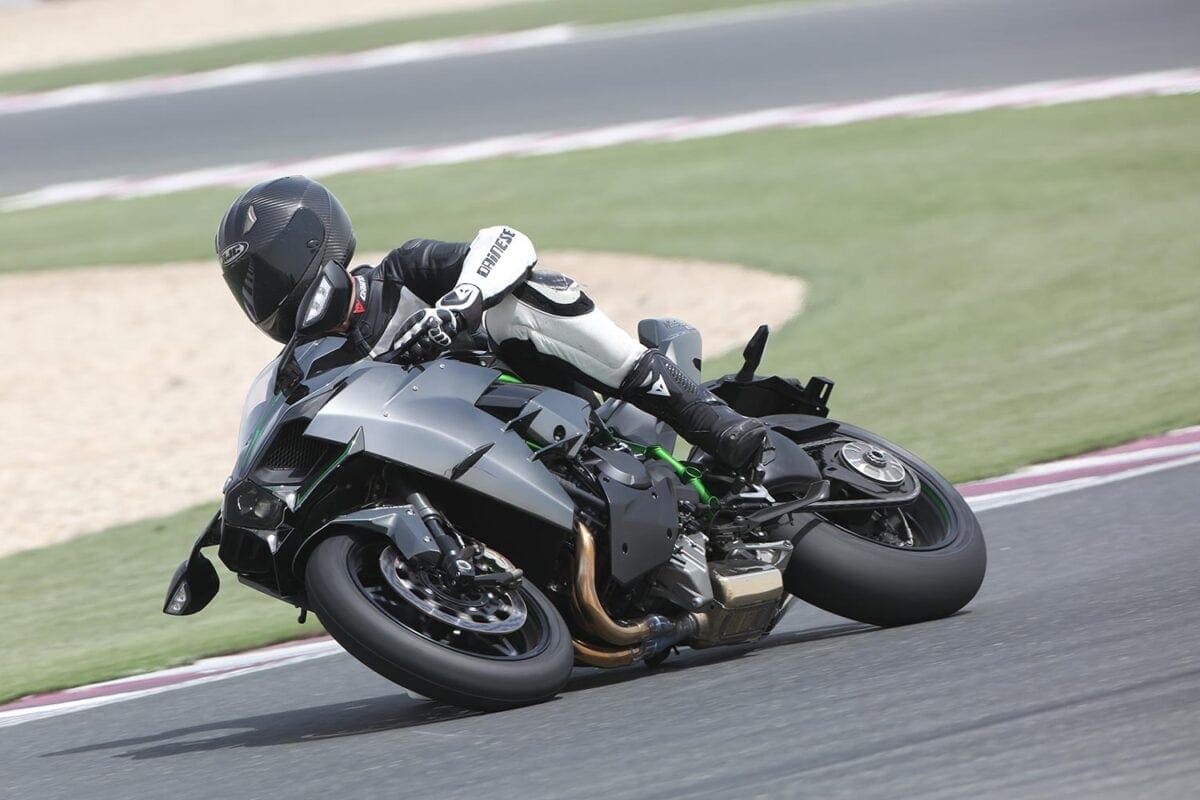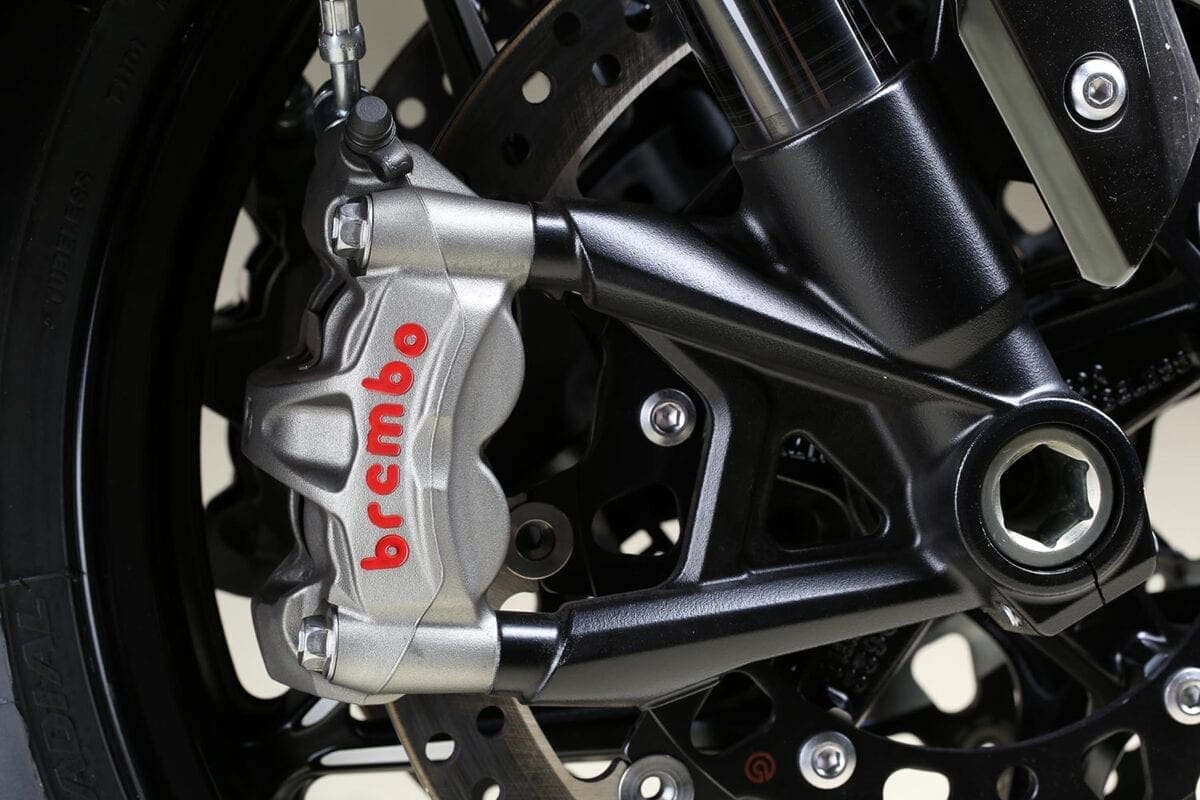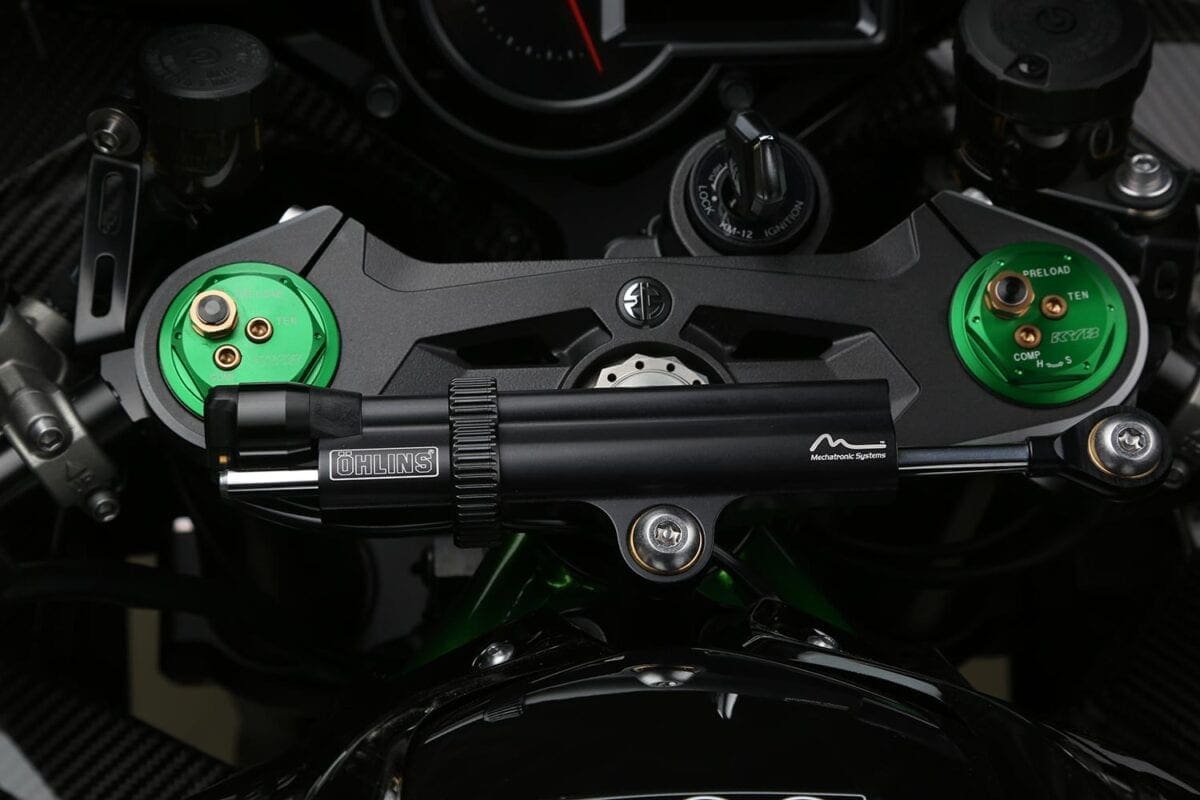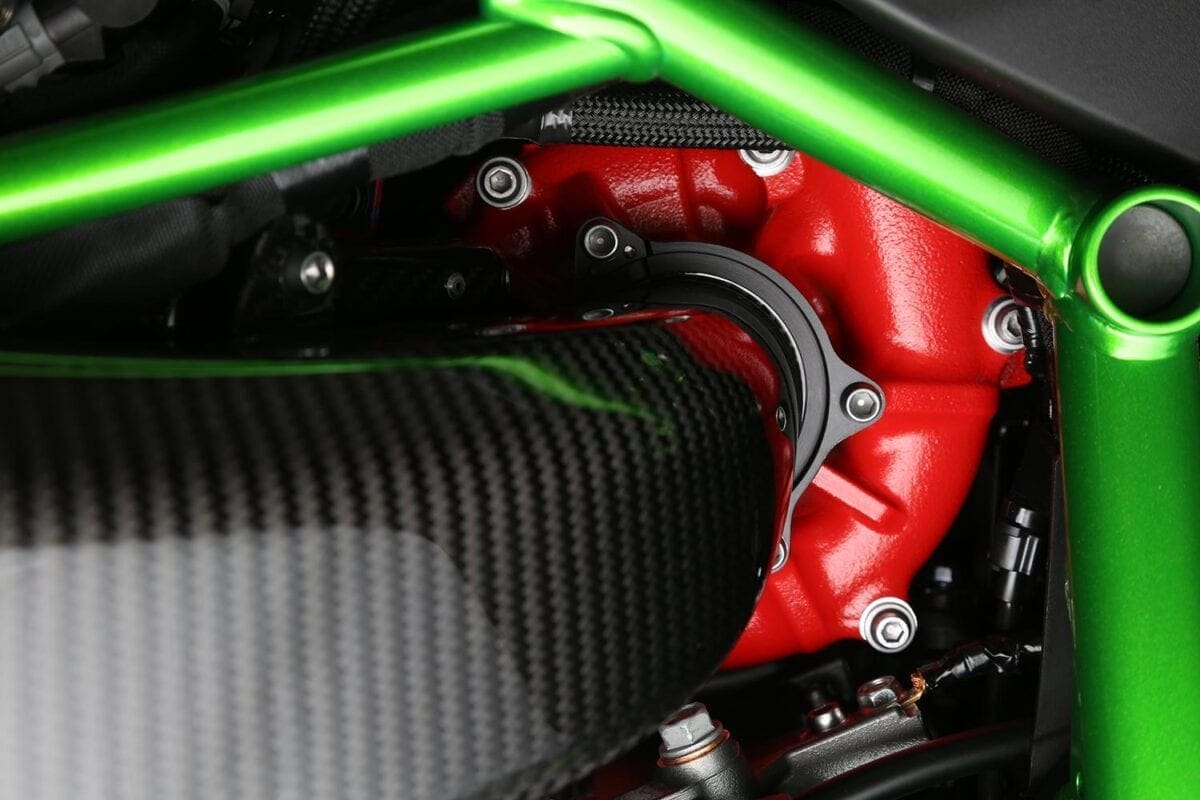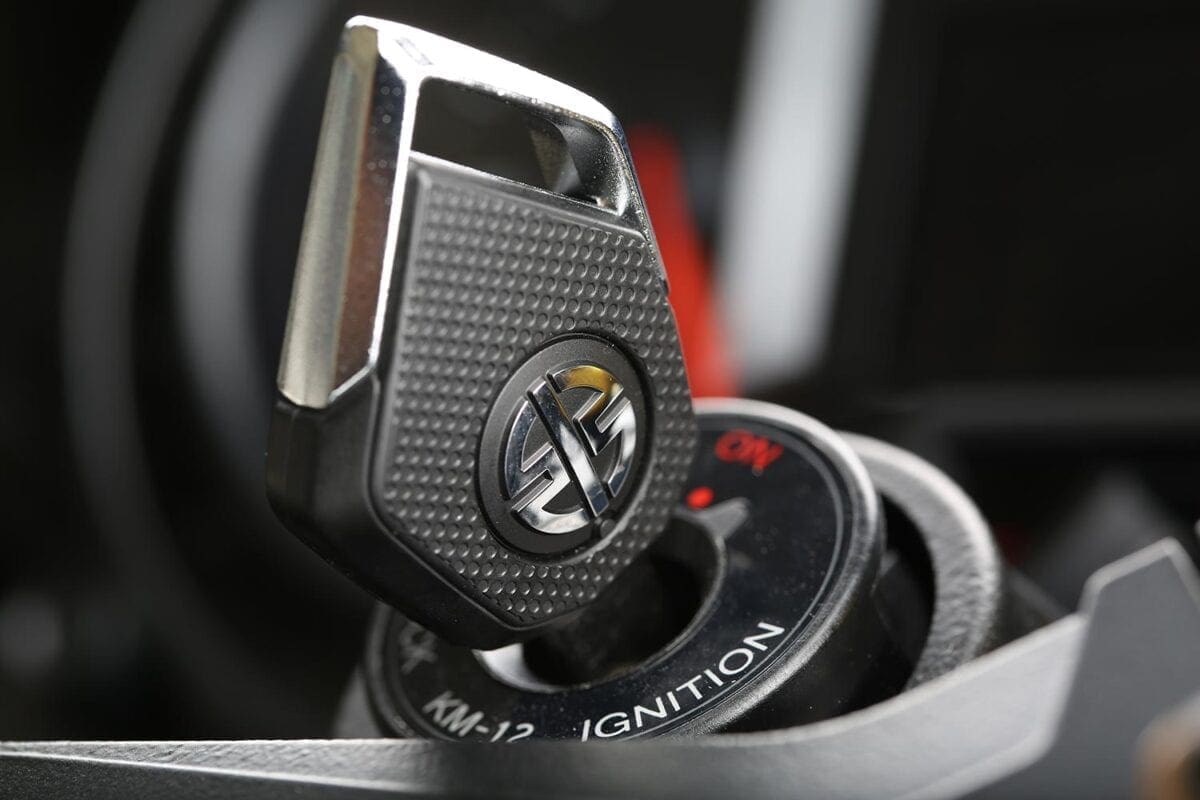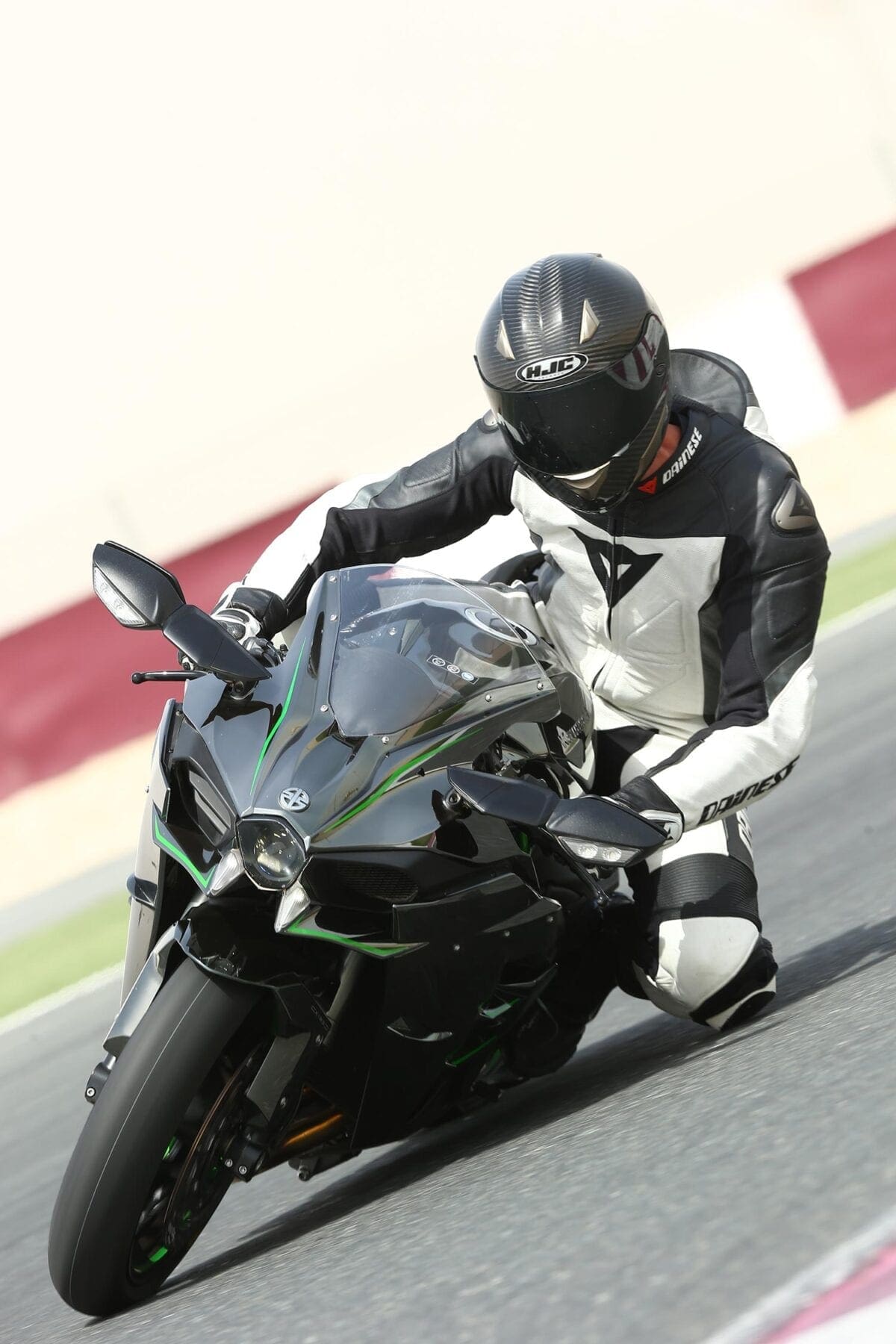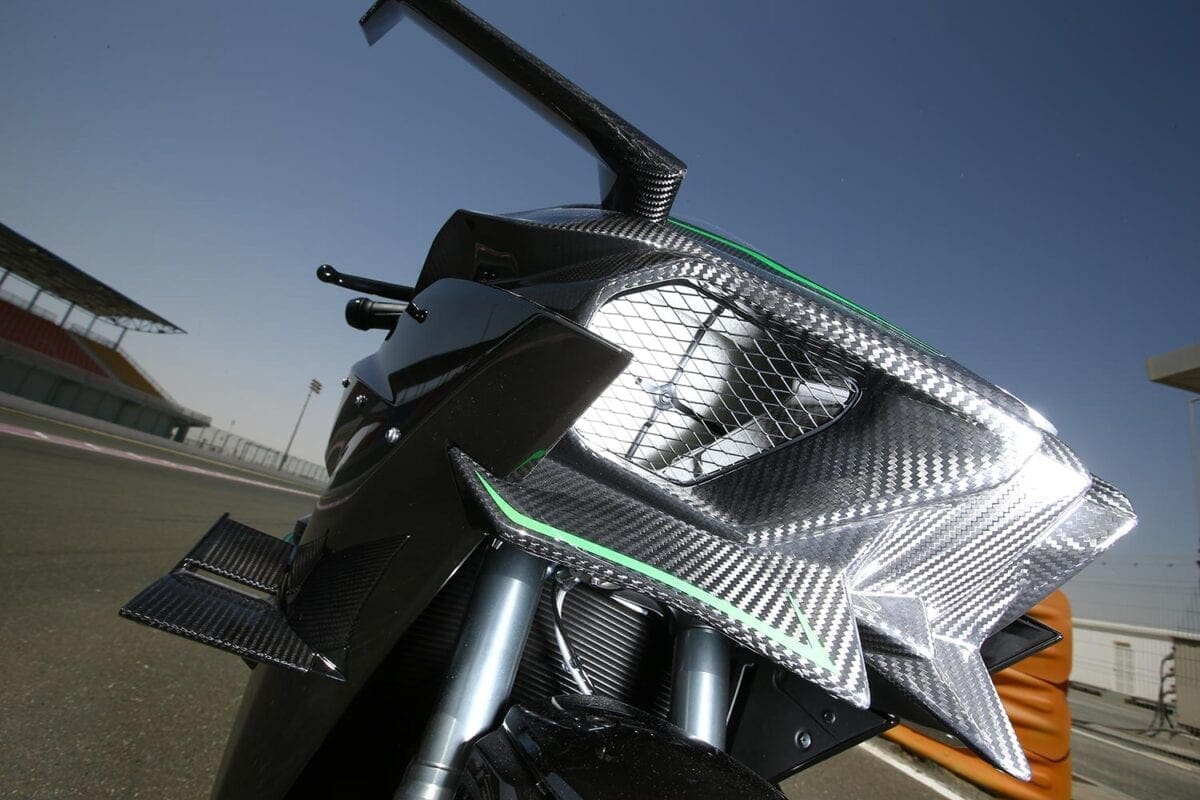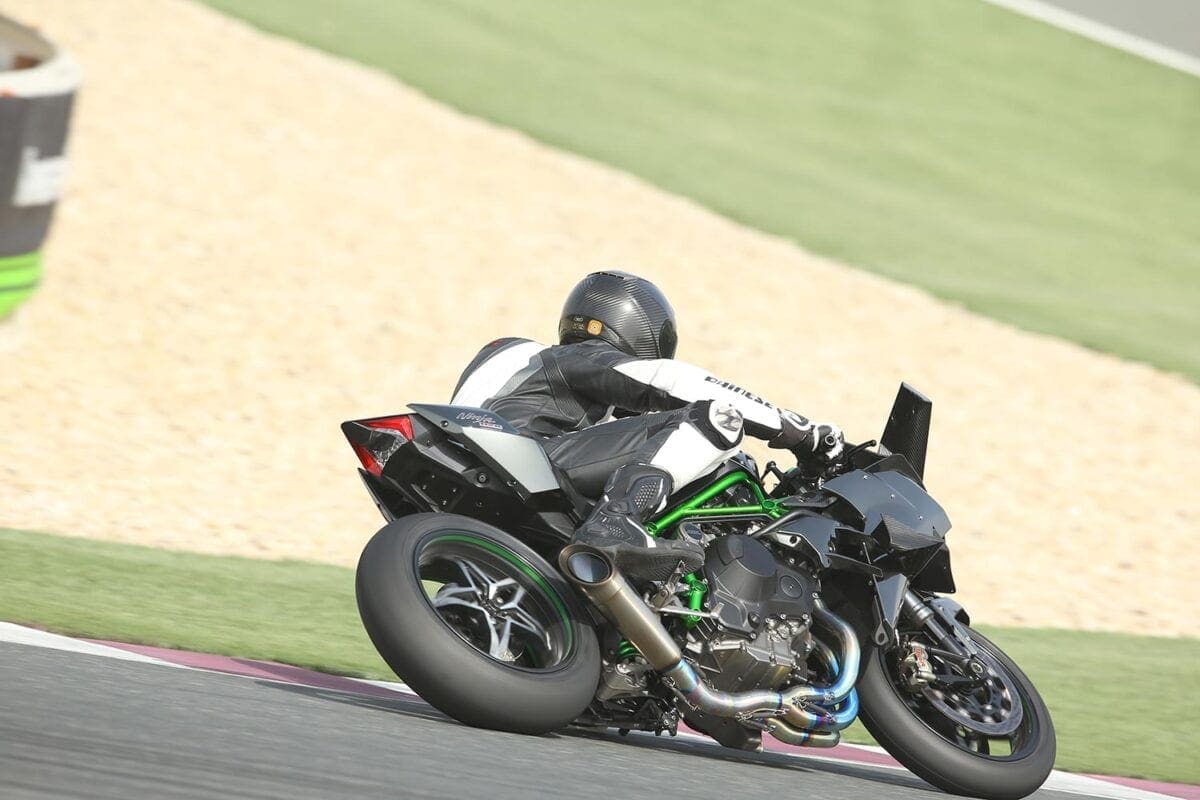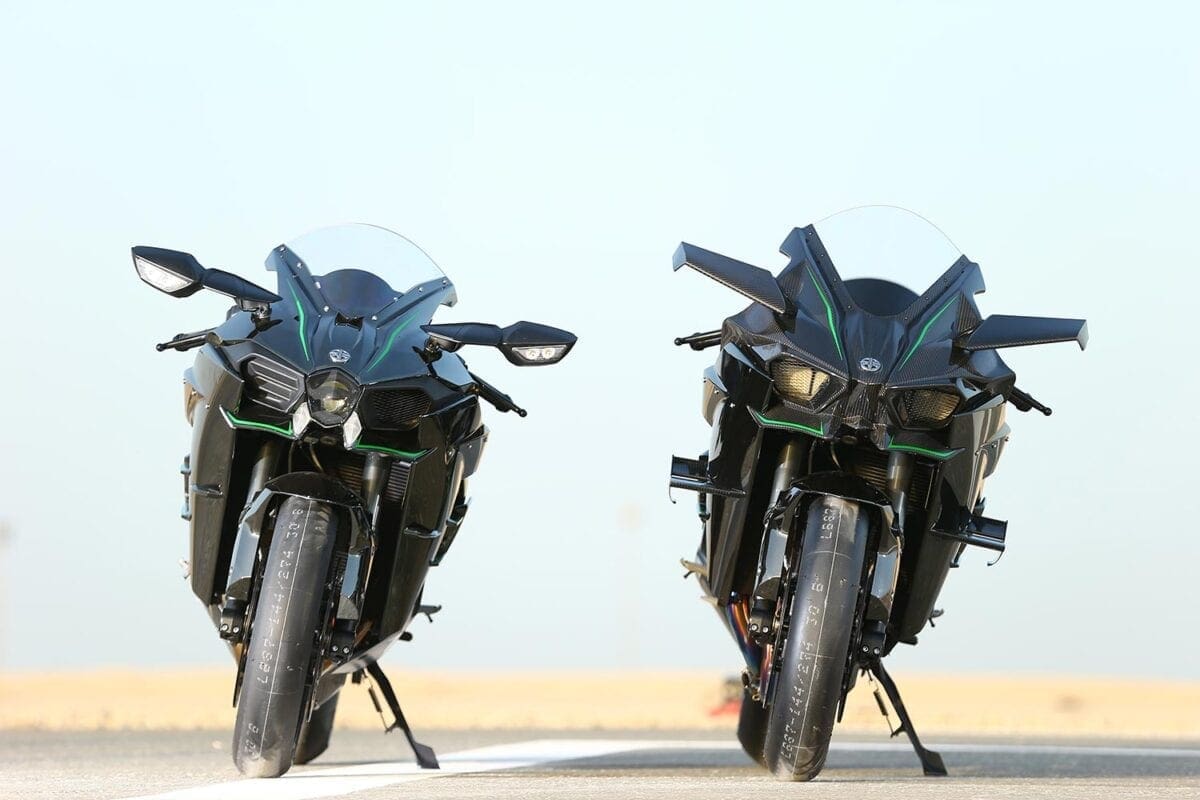Kawasaki H2R / H2 review | £22,000 (H2R: £41,000) | 207-319bhp | 98lb-ft | Supercharged 998cc liquid-cooled inline four-cylinder
Tested by Roland Brown. Motorcycle Journalist and former international racer, Roland Brown is one of the world’s most respected bike testers. Subscribe to his fantastic YouTube channel – iMotorcycle Video – here.
It’s a long time since motorcycling has seen anything as wonderfully bonkers as the supercharged Ninja H2 and H2R. With their 998cc four-cylinder engines boosted by a supercharger, the Ninjas not only make huge amounts of power – over 200bhp with ram-air in the case of the roadgoing H2, and an even more outrageous 300bhp-plus for the track-only H2R – but also bring a whole new level of technical interest, plus an amazing sound that captivated so many people at the NEC.
And there is so much more to the H2 and H2R than the extraordinary powerplant. These bikes are statements of corporate pride from Kawasaki: conceived to show the world what this giant company is capable of. Rather than following the ZX-10R with an aluminium beam frame, both models have tubular steel trellis frames and single-sided swing-arms.
And they very much look the part too. Bodywork is innovative and aggressive, finished in stunning silver-mirror paintwork, and in the H2R’s case fitted with outrageous aerodynamic winglets designed to enhance stability at over 200mph. One glance tells you these bikes are special, and that very much remains true when they’re ridden.
Tell me about the engine
The basic 998cc, 16-valve powerplant is all new, not a revamped ZX-10R unit, despite the obvious similarities. Supercharged engines like these generate a lot of heat and put huge demand on parts such as bearings, so the H2 lump was designed to cope with up to twice as much stress as a conventionally aspirated engine. Pistons are cast, rather than forged, to deal better with very high temperatures, and have flat tops to reduce compression.
The all-important supercharger was designed in-house at specialist divisions within the huge Kawasaki group of companies. It turns at 9.2 times the speed of the crankshaft, so at the H2R’s maximum of 14,000rpm it’s spinning at roughly 130,000rpm and cramming lots of mixture into the engine’s combustion chambers. It’s located behind the cylinders, generates 2.4 times atmospheric pressure and feeds a rigid aluminium airbox.
To withstand the extreme heat of the supercharged combustion, the exhaust valves are made from two materials – Inconel and steel – that are friction-welded together at their centres. The H2 and H2R units are almost identical, the only differences being the camshafts, head gaskets and clutch. But their outputs are very different: the standard H2 makes 197bhp (200PS) at 11,000rpm, or 207bhp with ram-air; the H2R puts out a staggering 319bhp (326PS) when ram-air is taken into account.
What’s the chassis like?
What it’s not like is anything that Kawasaki has built before, especially for a four-cylinder engine. The steel tubes are laser cut to ensure accuracy, of differing dimensions, and finished in metal-flake Kawasaki green. The firm says this frame design was chosen, instead of the familiar aluminium beam layout, because it allows a little flex, which improves stability at very high speed.
The rear subframe is aluminium, as is the single-sided swing-arm, chosen to allow room on the right side for the exhaust’s silencer – which in the case of the standard H2 was originally a large and ugly device that Kawasaki UK have wisely decided to replace with a much more attractive Akrapovic can. (The H2R has a racepipe that will require quietening even for track days!)
There’s no skimping with the cycle parts. Suspension is by KYB, including 43mm forks with Air-Oil Separate cartridges (developed in motocross). They have neat adjusters on the top of each leg, and are finished in green, naturally. Brakes are a blend of 330mm discs and Brembo Monobloc calipers, with a revised version of the ZX-10R’s race ABS. Inevitably the Ninja H2 is heavier than a conventional superbike, with a kerb weight of 238kg, but it gives away nothing at all in trickness.
Should I buy one?
Only if you’re pretty affluent, fancy something exclusive, and don’t mind being the centre of attention. But if you can tick those boxes, can cope with power delivery that might best be described as brutal, and fancy owning one of the most powerful, hard-accelerating and frankly outrageous production motorcycles ever built, then join the queue.
Even the standard H2 will be too much for some riders at times; a few might even hate it. There’s no doubt that the Kawasaki’s throttle response makes it demanding. But if you’re getting bored by the competence and near perfection of modern motorcycles, both these Ninjas provide an old style dose of raw excitement.
They also look absolutely stunning in their mirror-finish finery, especially given that Kawasaki UK will eliminate the one flaw on the H2’s appearance by substituting its large standard silencer with an infinitely neater carbon-fibre Akrapovic can. The H2 costs £22,000 and the H2R is £41,000, so they’re far from cheap. Against that, their exclusivity (Kawasaki UK has sold roughly 100 units of the H2 and 25 of the H2R, by far the highest totals of any market) means resale values should be high.
So what are they like to ride?
In a word, wild. And challenging, or you might say “difficult” if you’re comparing the Kawasakis to any of the latest crop of super-fast, easy-to-ride superbikes. The Ninjas are certainly unlike any other recent production bike, mainly due to the supercharged engine’s abrupt throttle response. Bikes like the S1000RR and latest YZF-R1 are immensely powerful but they cosset the rider with their flawless throttle response and almost idiot-proof electronics, making you feel you’re better than you really are.
The Ninja H2 is the opposite. It’s a relatively big, roomy superbike; a bit nearer the ZX-10R than the ZZR1400 in feel. By super-sports standards it’s fairly softly sprung, and its single seat is relatively well padded as well as having raised sections around it to keep the rider in place under acceleration. But there’s absolutely nothing cosy about the way the Ninja leaps forward when you touch the throttle.
To call the Kawasaki’s throttle response “aggressive” would be doing it a disservice. Provided the analogue tacho is showing enough revs, the supercharger crams some extra gas into the motor and the Ninja leaps forward with a force that takes some getting used to. And the bike also slows abruptly when you close the throttle, with a twittering sound from the supercharger.
This makes the H2 tricky to ride on a racetrack, such as the Losail circuit in Qatar where the launch took place. Rather than accelerating from the apex of turns, as normal, I got my braking done slightly early and dialled in some gas before the apex, so the bike was settled at full lean. Then it could be accelerated hard out of the bend, sometimes triggering the traction control, which is adjustable and helped keep down wheelies.
Then, on Losail’s near mile-long straight, it was just a question of tucking in tight, peering through the screen and clicking gears with the sweet-acting quick-shifter (which works only on up-changes) as the Ninja charged smoothly forward. By the end of the straight it was well into top gear, and somewhere near its electronically limited maximum speed of 186mph.
Thankfully high-speed stability was outstanding, helped by the electronic Öhlins steering damper. And there’s no shortage of stopping power, thanks to a pair of big 330mm front discs and four-pot Brembo radial calipers. The ABS system could be felt under ultra-hard braking on track, unlike some of the latest super-sport systems, but not before the Kawasaki was slowing with arm-straining force.
And the Kawa’s chassis also worked very well in turns. Its 238kg kerb weight and stability-enhancing geometry meant it was never going to flick through Losail’s chicane like a racebike, but it steered with an impressively neutral feel and its suspension was very well controlled, especially once Kawasaki’s mechanics had firmed both ends up slightly using the easily accessed adjusters. There was enough ground clearance that just the occasional boot-toe touched down, despite the grip of the launch bikes’ Bridgestone slicks.
Back in the real world, provided you can cope with the throttle response, the H2 should actually make a fine high-speed road-burner. Its riding position is slightly more relaxed than the ZX-10R’s, with 10mm higher bars and footrests similarly further forward. The screen is tall enough to give a reasonable amount of wind protection and the mirrors are excellent.
But there’s not much point in making a case for the Ninja H2 based on its practicality. This is not a sensible motorbike, and in a way that’s the whole point. If you’re looking for old-school scary two-wheeled thrills, the hardest-accelerating thing on two wheels, or a bike that looks, sounds, feels and generates adrenaline like nothing else, then there’s probably only one bike that beats the Ninja H2. And that’s its even more utterly crazy H2R sibling.
Riding the H2R
If the standard H2 is surely the hardest-charging, most over-the-top production roadster in living memory, then the 319bhp, track-only H2R delivers the same sensations, times about one and a half. Or in the case of its sound, times about ten thanks to its utterly deafening and totally exhilarating racket that left my ears ringing, hours after riding it.
The way the H2R ripped down the Losail circuit’s main straight had to be experienced to be believed, and it was testament to the chassis’ ability – and to some extent the traction control – that its wheelies didn’t get uncontrollable; the bike never felt remotely unstable at speed.
And boy, did it generate some speed. The H2R was geared two teeth taller than the standard Ninja, and was still accelerating enthusiastically when I ran out of nerve and hauled on the brakes for the Turn One right-hander. At that point its speedo recorded a best of 198mph, which was slightly disappointing because a couple of more aerodynamic, or perhaps just braver, riders than me topped 200mph, with plenty more to come.
In many respects the H2R makes no sense at all but riding it is an unforgettable – if occasionally fraught – experience. It’s a stunning, unique and magical motorcycle that deserves a place in every lottery winner’s garage.
TECH SPEC
Price: £22,000 [£41,000]
Engine: 998cc, liquid-cooled, dohc supercharged four
Power: (H2) 197bhp (147kW) @ 11,000rpm (207bhp with ram-air)
(H2R) 306bhp (228kW) @ 14,000rpm (319bhp with ram-air)
Torque: 98lb-ft (133.5N.m) @ 10,500rpm
Kerb weight: 238kg (H2R: 216kg)
Seat height: 825mm
Tank size: 17 litres

